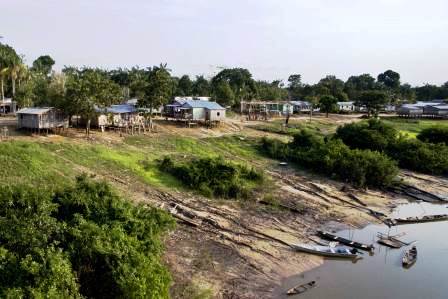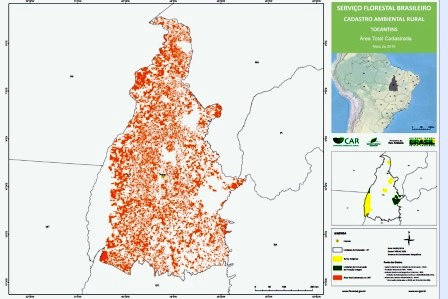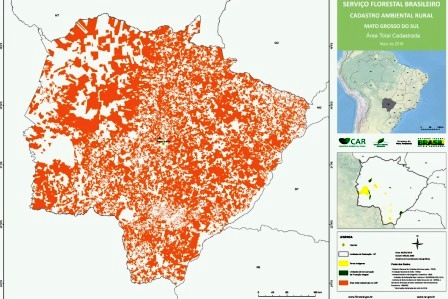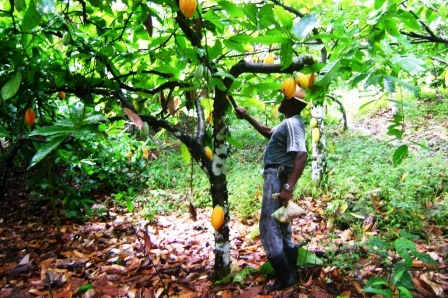RESULTS AND IMPACTS INDICATORS
The project's activities contributed to the outcomes related to the 'Sustainable Production' component (1) of the Amazon Fund's Logical Framework.
The main indicators agreed upon for monitoring this objective were:
Direct effect 1.1 – Economic activities based on the sustainable use of the forest and biodiversity developed in the supported Indigenous Lands (TIs) and Extractive Reserves (RESEXs).
Key Outcome Indicators
- Revenue from sustainable economic activity supported by the project (raw products)
Target: R$ 1,012,700.00 | Achieved result: R$ 5,834,983.64
- Revenue from sustainable economic activity supported by the project (processed products)
Target: R$ 240,000.00 | Achieved result: R$ 627,631.83
- Area of forest directly managed
Target: 170,000 hectares | Achieved result: 131,553 hectares
The initial target was overestimated, as it was calculated based on mappings that did not reflect the actual conditions of the region. Additionally, many areas used for açaí, brazil nut, and rubber cultivation overlap, which had not been considered when estimating the project’s targets.
- Number of strengthened community organizations
Target: 6 | Achieved result: 6
- Total number of individuals trained in sustainable economic activities and effectively applying the acquired knowledge, broken down as follows:
Target:
(i) 900 individuals
(ii) 315 women
(iii) 567 Indigenous people
Achieved result:
(i) 1,979 individuals in total
(ii) 582 women
(iii) 185 Indigenous people
The training of Indigenous participants was reduced due to the pandemic and the resulting restricted access to Indigenous areas, which had their protection reinforced by National Foundation for Indigenous Peoples (Funai).
Key Outputs Indicators
-
Number of native brazil nut groves exploited and maintained with project support
Target: 100 | Achieved result: 259
-
Area of açaí management with activities supported by the project
Target: 4,000 hectares | Achieved result: 11,276 hectares
-
Number of rubber tree groves exploited with project support
Target: 60 | Achieved result: 125
-
Number of storage infrastructures built or renovated
Target: 15 | Achieved result: 13
-
Number of participations in sociobiodiversity product discussion events promoted by Amazonian discussion networks
Target: 6 | Achieved result: 32
-
Volume of brazil nuts sold through new market channels (in tons)
Target: 60 | Achieved result: 60
-
Number of workshops and training courses conducted
Target: 14 | Achieved result: 10
-
Number of individuals participating in experience exchange activities related to sociobiodiversity product value chains in the Amazon
Target: 120 | Achieved result: 62
Institutional and administrative aspects
In support of commercialization, notable contracts were signed with companies such as VERT/VEJA from France and OSKLEN. Additionally, SAVE SHOES and MERCUR also expressed interest in partnerships.
The Pact began participating in various discussion forums, such as the Sectoral Chamber for Agroextractivism and the Origens Brasil Network. It also supported the revision of the state-level Food Acquisition Program (PAA) law, enabling the inclusion of associations in public calls for proposals. Representatives of the Pact are also involved in the Brazil Nut Observatory (OCA) and took part in AnuFOOD Brasil, the largest food products fair in Latin America.
Partnerships and joint efforts were established with several institutions, including: hico Mendes Institute for Biodiversity Conservation (ICMBio); Funai; the State Secretariat for Environmental Development (SEDAM/RO); Brazilian Agricultural Research Corporation (Embrapa); International Institute for Education of Brazil (IEB); Imaflora (Origens Network); and WWF-Brazil.
Risks and lessons learned
The project enabled various learnings, both in terms of management and implementation, and in practice, in the daily lives of communities and villages.
During the mapping of brazil nut groves, registration revealed that 47% of nut gatherers are women, highlighting their fundamental role in forest value chains and the importance of including them in bioeconomy projects. It was also observed that the use of technology and innovation—such as mobile phones and drones—attracted youth participation, resulting in 100% engagement of this group in the activities.
The storage sheds in the areas were built with metal structures and rainwater harvesting systems. This strategy was essential to avoid the use of Amazonian timber, increase the durability and lifespan of the sheds, and prevent deterioration caused by insects such as termites.
One of the greatest challenges in transporting forest products is maintaining the means of transportation, which can cost as much as acquiring a new one.
Sustainability of results
The main benefit of the project was encouraging the population of the Indigenous Lands (TIs) Igarapé Lourdes and Rio Branco, and the Extractive Reserves Rio Cautário and Rio Ouro Preto, to believe in the viability of generating income from standing forest. This outcome strengthened community involvement in extractive activities, promoting greater security for forest maintenance and conservation.
The project led to improvements in value chains, producer regularization, quality storage, good management practices, and access to buyers who value the forest and pay fairer prices. Positive results include: (i) personnel training; (ii) strengthening of extractivists and their communities; (iii) structuring of commercial articulation activities and participation in institutional networks, which resulted in revenues from product sales far exceeding initial expectations - especially in the case of rubber and brazil nuts - contributing to the viability of keeping the forest standing.
This shift in mindset was only possible due to continuous support, dialogue, and training in management, storage, commercialization, and business administration. Four pillars are essential to ensure the sustainability of extractive activities:
i) support in management and improvement of production quality,
ii) implementation of physical infrastructure,
iii) value addition and market access, and
iv) strengthening/improvement of organizational management.
However, there are real internal and external risks surrounding these protected areas that threaten the continuity of this transformation process, such as: the return of logging and deforestation; the lack of secure markets and fair prices for extractive products; turnover in the management of community organizations; and the expansion of monocultures such as soy, rice, and others in the region.








